ARCHITECTURAL PROJECTS
PUBLIC
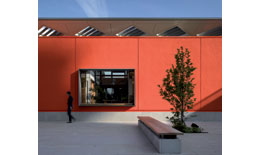
08 November, 2009
Rogers Stirk Harbour & Partners was awarded for the second time with the Stirling Prize
Maggie’s Centre London is the RIBA Building for 2009. 
Maggie’s Centre London was awarded with the Stirling Prize for the RIBA Building of the Year on 28 October 2009. It is the second time that Rogers Stirk Harbour + Partners has won the Stirling Prize. The office was awarded the Prize in 2006 for the project Terminal 4, Madrid Barajas Airport. The judges commented: Rogers Stirk Harbour + Partners has produced a timeless work of architecture that not only distils the intentions of this brief but expresses in built form compassion, sensitivity and a deep sense of our common humanity.

copyright Richard Bryant/ Arcaid.co.uk
Maggie’s Centres are support centres for people affected by cancer and their work is in complete support of conventional medical treatment. Maggie’s Centre London is located in the grounds of Charing Cross Hospital in Hammersmith and it is conceived to contrast with the main hospital building. It is a ‘non-institutional’ building, an ‘open house’. It is a flexible and adaptable space. It can be transparent or opaque, noisy or quiet, light or dark. The aim of Rogers Stirk Harbour + Partners was to create something that is more than a house – more welcoming, more comfortable, more thought-provoking and more uplifting.
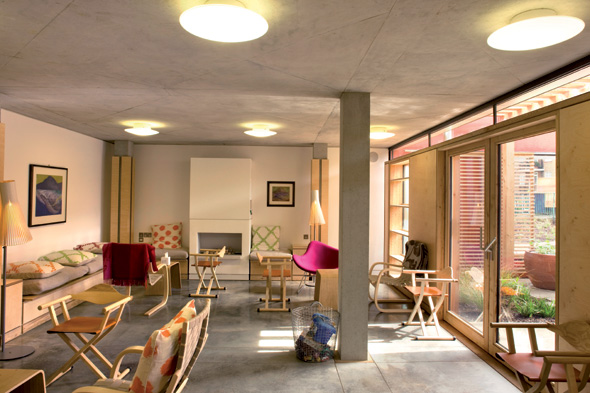
copyright Morley von Sternberg
The design of Maggie’s Centre London lays in the creation of a sequence of internal and external environments that are located in an inhospitable area next to a heavily congested and polluted main road.
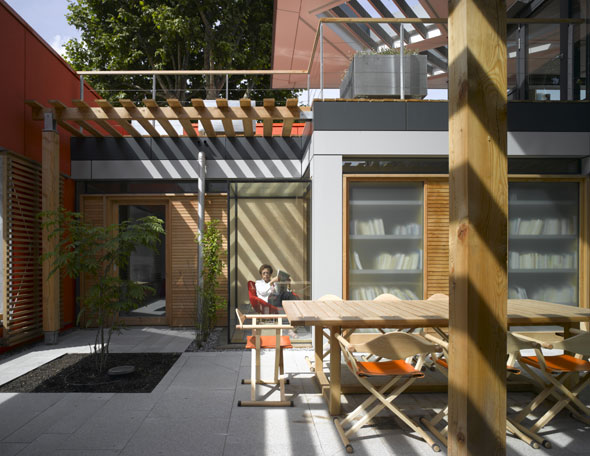
copyright Richard Bryant/ Arcaid.co.uk
The aim was to make a welcoming support centre in this busy London streetscape and make the most of a difficult corner site in the grounds of Charing Cross Hospital.
The main architectural feature of the building is its “floating” roof which appears to “hover” over the outer wall. The roof is penetrated with a distinctive series of openings that allow natural light, wind and rain into the garden areas below.
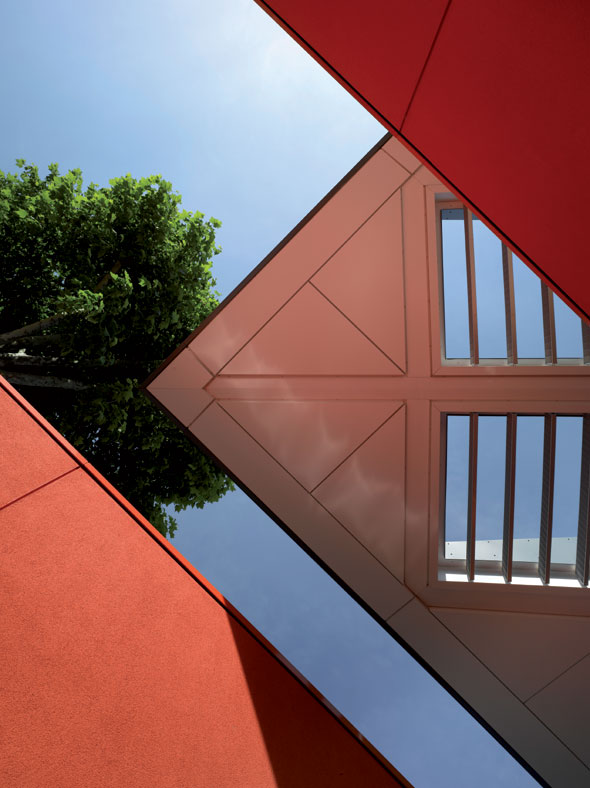
copyright Richard Bryant/ Arcaid.co.uk
Low energy consumption has been used in the building. Natural ventilation, high level of insulation, recycling of rainwater, use of timber from renewable sources only, planting to filter road traffic noise and enhance the surroundings and the significant planting of over 80 trees across the site are some of its environmental features.
The entrance to the Centre is approached from within the hospital grounds.
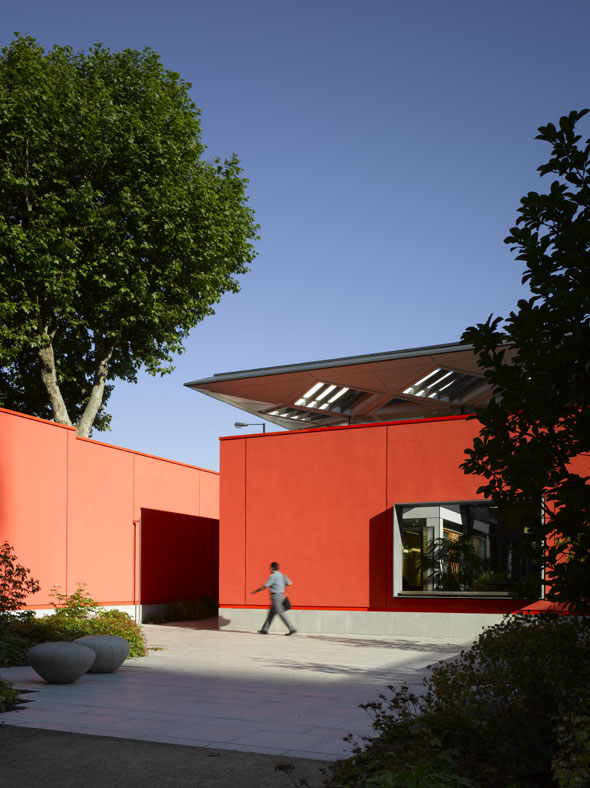
copyright Richard Bryant/ Arcaid.co.uk
The building is made up of four components:
a) a wall that wraps around four sides, providing protection from its exposed location
b) a double-height central space-kitchen which is the main focus and heart of the building
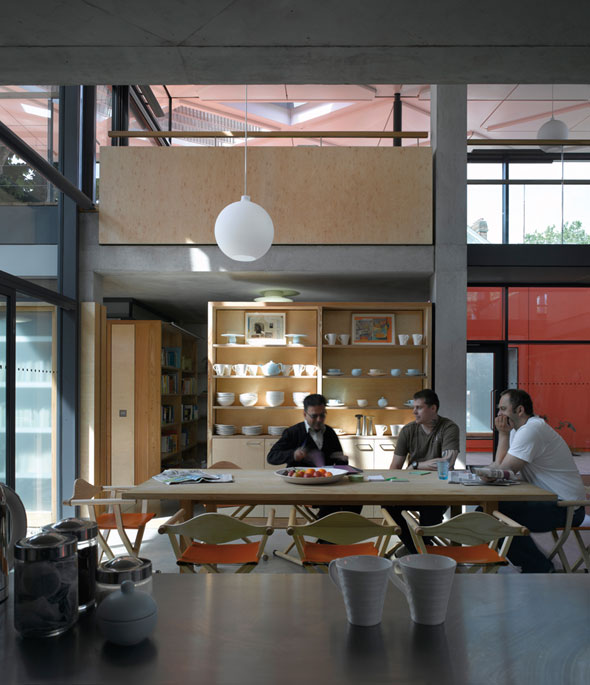
copyright Richard Bryant/ Arcaid.co.uk
c) annexes off the main space, conceived as meeting, sitting and consulting rooms

copyright Richard Bryant/ Arcaid.co.uk
d) the “floating roof” that was mentioned above, which acts as the enclosure to the heart of the building.
An attractive environment for staff and visitors requires high quality acoustics. High external walls are used to protect the inner space from the relentless daytime noise and visual distractions of Fulham Palace Road. The design allows people using the Centre to be aware of life going on around them while still maintaining their personal privacy. A careful balance has been achieved between the privacy of the visitors and the existing vibrant environments outside.
Landscaping is a fundamental issue of any Maggie’s Centre, but particularly in Maggie’s London given the relatively harsh physical nature of the surrounding urban environment. Rogers Stirk Harbour + Partners in cooperation with landscape architect, Dan Pearson created “an oasis of calmness” within this hostile environment .This partnership extended the remit of the Centre and built on the passion for landscape architecture of Maggie’s founder, Maggie Keswick Jencks. The three key external garden areas – the northern, eastern and southern winter gardens – are effectively treated as extensions of the internal areas. A network of spaces, both internal and external gardens provide different scales of spaces. All areas of the ground floor are accessible to visitors, who are encouraged to find their own space in the building.
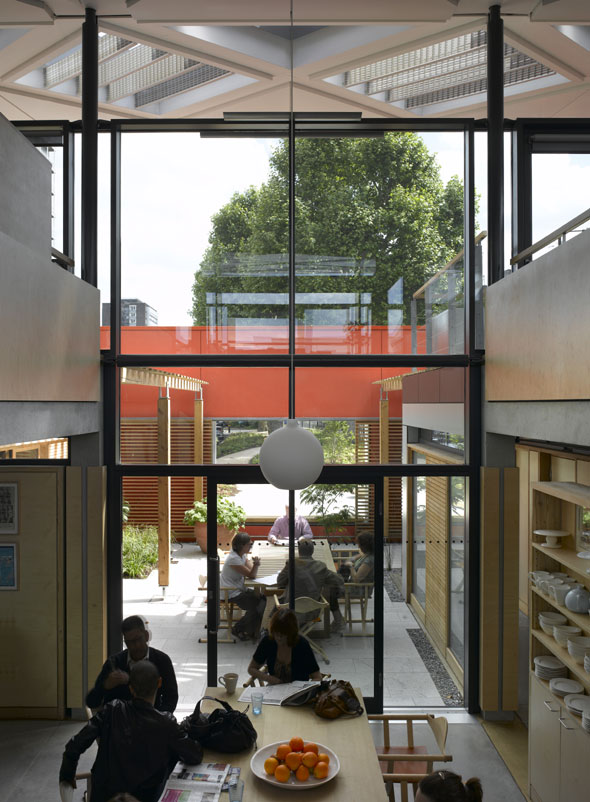
copyright Richard Bryant/ Arcaid.co.uk
The landscaping strategy in relation to the existing hospital and the new Maggie’s Centre creates a distinct and therapeutic environment around - and within - the building and subsequently contributes to its healing potential. Users of the Maggie’s Centre are actively encouraged to participate in the maintenance of the plants and gardens in an attempt to give them a sense of ownership of the building. The impression of an insular, protected environment extends through the courtyard winter gardens by use of selected vistas to the landscaped public spaces beyond. Maggie’s Centre London is surrounded by a collection of multi-stemmed trees, which wrap the building on the two sides which face the outside world. These trees will help to filter the noise pollution from the nearby road, whilst providing an attractive view from both the inside and out.
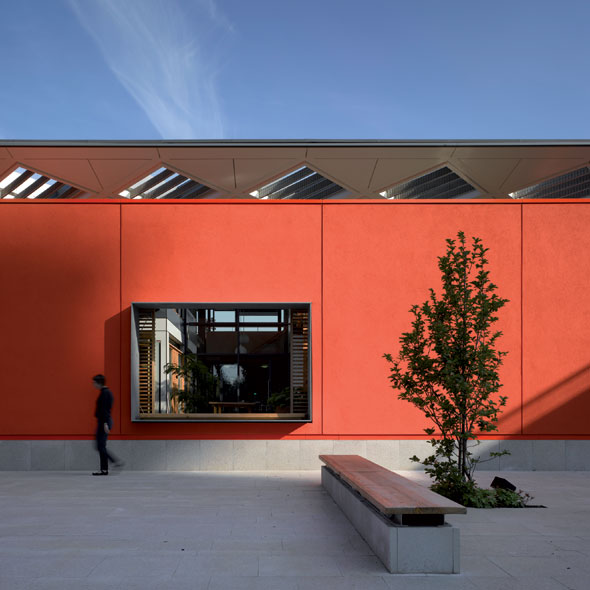
copyright Richard Bryant/ Arcaid.co.uk
Information: Rogers Stirk Harbour + Partners
Images: Rogers Stirk Harbour + Partners
Maria Papadimitriou, architect engineer
Related articles:
- BTEK, almost an exercise in land art. ( 09 May, 2014 )
- Seletar Close ( 17 December, 2009 )
- Vader House ( 31 January, 2010 )
- Private residence and guest house in the Laurentian mountains ( 26 March, 2011 )
- Rogers Stirk Harbour & Partners was awarded for the second time with the Stirling Prize ( 08 November, 2009 )
- Moderna Museet Malmö ( 10 May, 2010 )
- London Festival of Architecture 2010 ( 18 June, 2010 )
- Valletta City Gate ( 15 July, 2010 )
- Long Barn Studio, Nicolas Tye Architects ( 17 December, 2011 )
- Ceramica Cumella . Shaping Ideas ( 01 October, 2012 )










